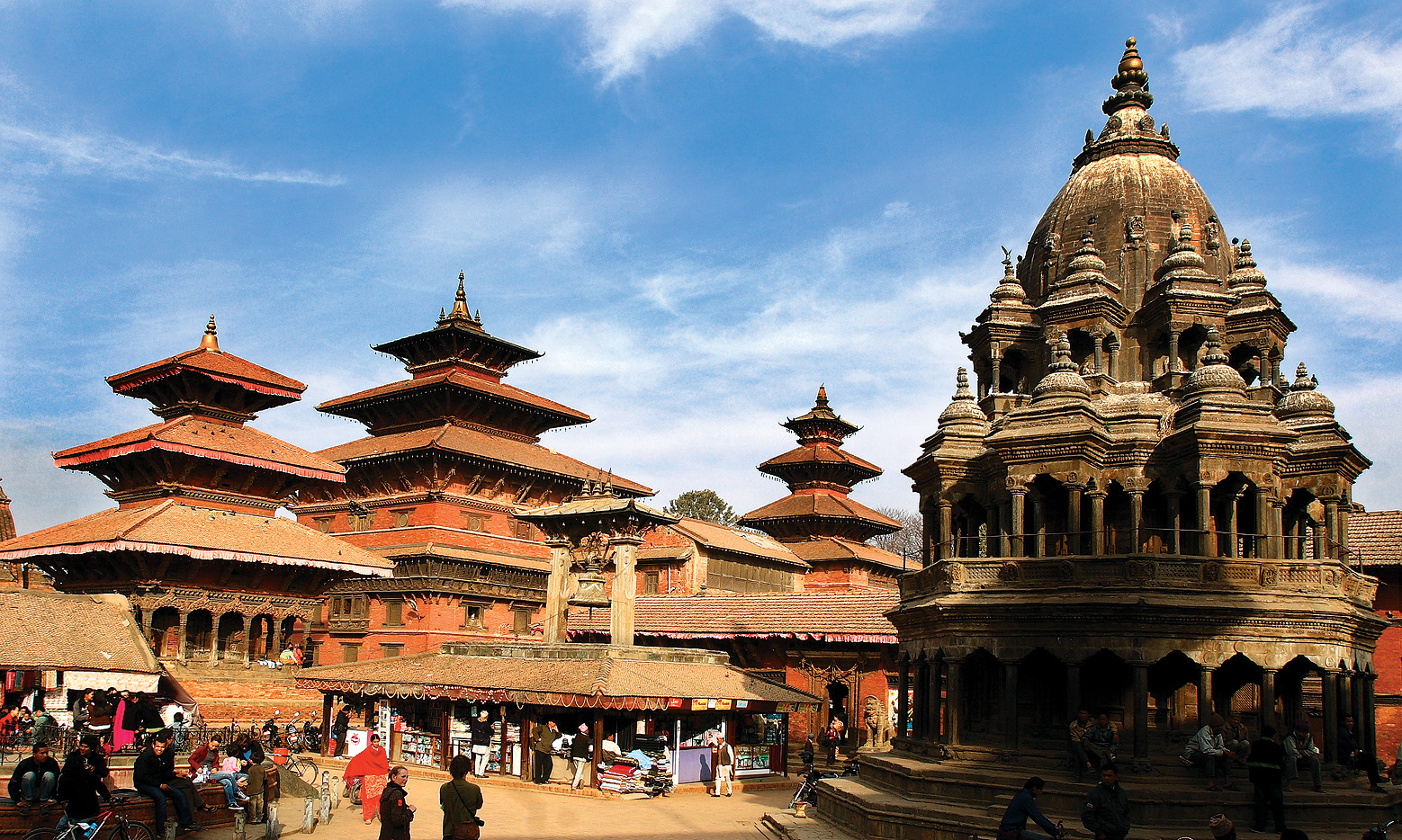Nestled in the heart of the ancient city of Patan, just a short distance from Kathmandu, Patan Durbar Square stands as a testament to Nepal’s rich cultural heritage and architectural splendor. As one of the three Durbar Squares in the Kathmandu Valley, alongside Kathmandu Durbar Square and Bhaktapur Durbar Square, Patan Durbar Square is a must-visit destination for anyone exploring the historical and cultural tapestry of Nepal.
Patan Durbar Square, also known as Lalitpur Durbar Square, is a UNESCO World Heritage Site renowned for its exquisite Newar architecture and intricate wood carvings. The square dates back to the 3rd century, although most of the existing structures were built during the Malla period (12th to 18th centuries). It served as the royal palace complex for the Malla kings of the Patan Kingdom, showcasing a blend of Hindu and Buddhist architectural styles.
One of the highlights of Patan Durbar Square is the Hiranya Varna Mahavihar, also known as the Golden Temple, which is renowned for its ornate golden facade and intricate woodwork. Another architectural gem is the Mahabouddha Temple, often referred to as the “Temple of a Thousand Buddhas,” which is a remarkable example of brick pagoda construction and features thousands of Buddha images engraved on its walls.
The square’s central feature is the 16th-century Krishna Mandir, a five-tiered pagoda-style temple dedicated to Lord Krishna. This temple is famous for its detailed carvings and vibrant frescoes depicting various scenes from Hindu mythology. The pagoda stands as a prime example of the Malla era’s artistic and architectural prowess.
Patan Durbar Square is not only a hub of architectural splendor but also a vibrant center of cultural activities. The square is a focal point for numerous traditional festivals and religious ceremonies that offer visitors a glimpse into the living culture of Nepal.
One of the most significant festivals celebrated here is the Indra Jatra, a traditional Newar festival honoring the god Indra, the king of heaven, and his daughter. The festival features elaborate processions, traditional dances, and the iconic Kumari Jatra, where the Living Goddess or Kumari is paraded through the streets in a chariot.
Another notable festival is the Patan Museum Festival, held annually, which brings together artisans, performers, and cultural enthusiasts from across Nepal and beyond. The festival includes traditional music, dance performances, and craft exhibitions, providing a rich cultural experience for visitors.
Located within the Durbar Square complex, the Patan Museum is a highlight of the area and a must-visit for anyone interested in Nepal’s cultural and historical heritage. The museum is housed in a restored palace and showcases an impressive collection of traditional Nepalese art and artifacts.
The museum’s exhibits include a vast array of sculptures, paintings, and relics from various periods of Nepali history. It provides an in-depth understanding of the region’s artistic traditions, including intricate metalwork, stone sculptures, and traditional textiles. The museum’s architecture itself is a marvel, blending traditional Newar styles with modern exhibition techniques to create a captivating visitor experience.
Beyond its historical and cultural offerings, Patan Durbar Square is also a vibrant marketplace for traditional Nepali crafts and souvenirs. The surrounding streets are lined with shops and stalls selling a variety of handcrafted items, including intricately carved wooden statues, traditional Thangka paintings, and beautiful jewelry.
Visitors can explore the numerous workshops and galleries that specialize in traditional Newar crafts. These craftspeople continue the age-old traditions of woodworking, metalwork, and painting, offering unique and authentic items for purchase. The local artisans are often happy to share their techniques and stories, providing visitors with a deeper appreciation of their craft.
Patan Durbar Square is well-equipped to cater to tourists, with a range of amenities and services available to enhance the visitor experience. From guided tours and cultural workshops to local eateries and accommodations, there are plenty of options for tourists to explore and enjoy the area.
The square is accessible from Kathmandu via a short drive or a pleasant bike ride, making it a convenient day trip from the capital. The local transport infrastructure, including taxis and rickshaws, ensures easy access for visitors. Additionally, there are several well-maintained guesthouses and boutique hotels in the vicinity, offering comfortable accommodation options for those who wish to stay longer and immerse themselves in the local culture.
Efforts to preserve and protect Patan Durbar Square’s cultural and architectural heritage have been ongoing, particularly in the wake of the 2015 earthquake that caused significant damage to many historic structures. Restoration projects have been undertaken to repair and conserve the square’s invaluable heritage, ensuring that future generations can continue to enjoy and learn from this remarkable site.
The prospects for Patan Durbar Square as a tourist destination look promising. Continued investment in preservation, combined with the growing interest in cultural and heritage tourism, is expected to enhance the square’s appeal. By offering an authentic glimpse into Nepal’s rich history and culture, Patan Durbar Square remains a jewel in the crown of Nepal’s tourism landscape.
Patan Durbar Square is more than just a historical site; it is a living cultural treasure that captures the essence of Nepal’s rich heritage and artistic traditions. Its stunning architecture, vibrant festivals, and local crafts make it a must-visit destination for anyone exploring the Kathmandu Valley. As the square continues to attract visitors from around the world, it stands as a testament to Nepal’s enduring legacy and its vibrant cultural landscape. Whether you’re a history enthusiast, a culture seeker, or simply a curious traveler, Patan Durbar Square offers an unforgettable experience that beautifully bridges the past with the present.






